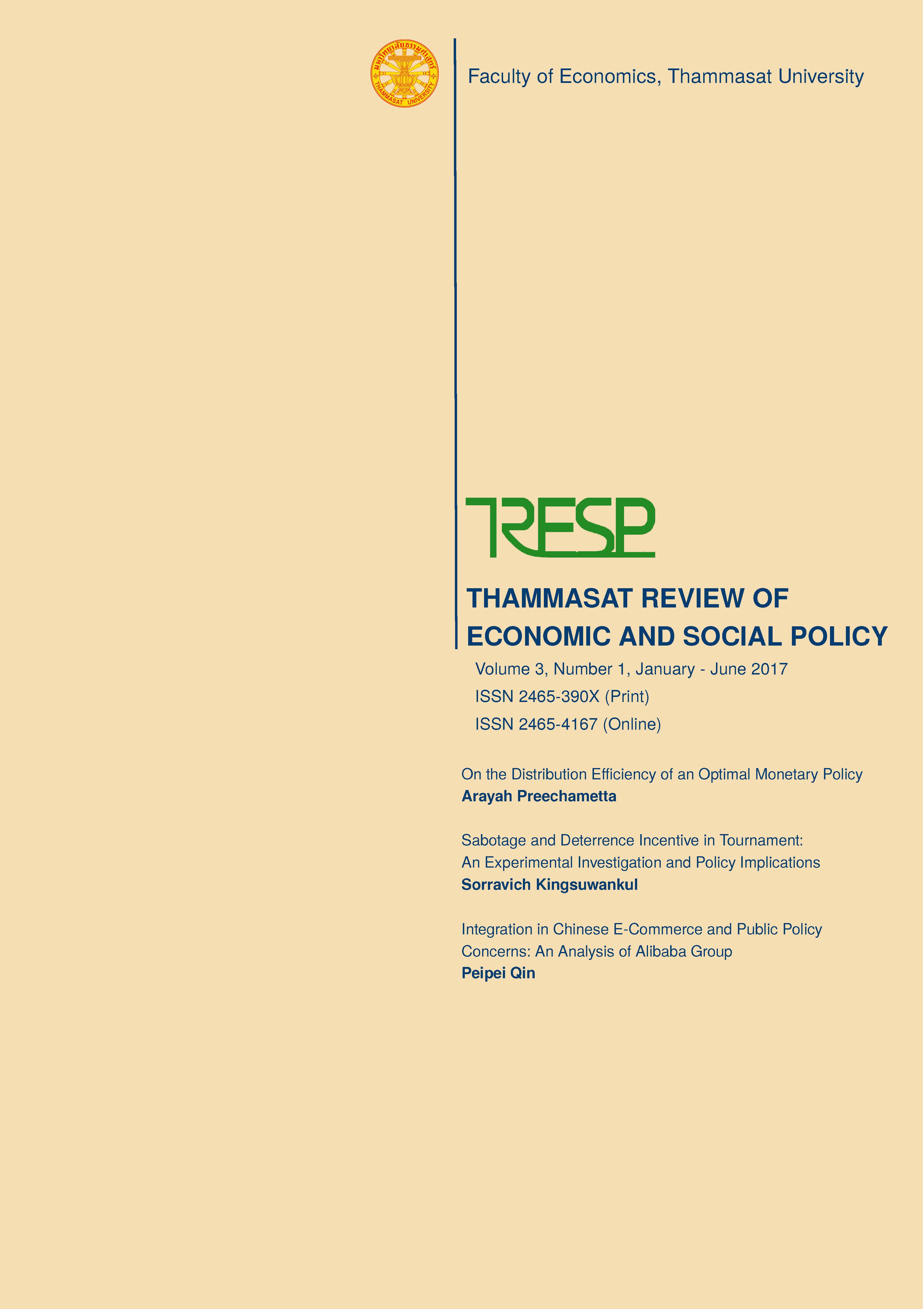On the Distribution Efficiency of an Optimal Monetary Policy
DOI:
https://doi.org/10.14456/tresp.2017.1Keywords:
Distribution efficiency, optimal monetary policy, asset price, non-arbitrage profit, liquidity, nominal interest, Friedman ruleAbstract
The paper studies the impacts of an optimal monetary policy on the distribution and production efficiencies by using a framework of multiple types of household and assets. It extends the work of Xiang (2013) by adding a new type of risky asset, known as Lucas tree, into an existing moneybond model. Some new results can be generated by requiring that all asset markets must satisfy the non-arbitrage profit condition. For example, regardless of insufficient liquidity, a zero nominal interest rate as suggested by the Friedman rule becomes an optimal monetary policy that can lead the economy to its full distribution efficiency and also lower its production inefficiency at the same time.
References
Andolfatto, D. (2011). A note on the societal benefits of illiquid bonds. Canadian Journal of Economics/Revue canadienne d'économique, 44(1), 133-147.
Bhattacharya, J., Haslag, J. H., & Martin, A. (2005). Heterogeneity, redistribution, and the Friedman rule. International Economic Review, 46(2), 437-454.
Friedman, M. (2005). The optimum quantity of money. Transaction Publishers.
Kocherlakota, N. R. (2005). Optimal monetary policy: what we know and what we don't know. International Economic Review, 46(2), 715-729.
Lucas Jr, R. E. (1978). Asset prices in an exchange economy. Econometrica: Journal of the Econometric Society, 1429-1445.
Xiang, H. (2013). Optimal monetary policy: distribution efficiency versus production efficiency. Canadian Journal of Economics/Revue canadienne d'économique, 46(3), 836-864.



